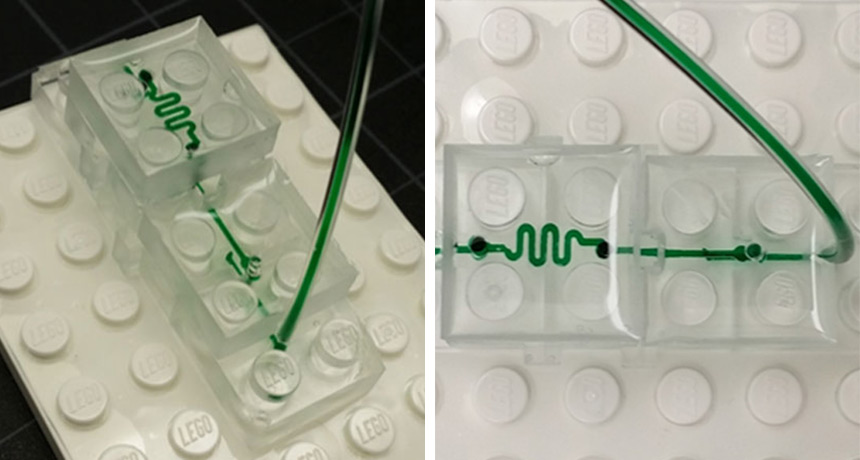Construction of tiny, fluid-filled devices inspired by Legos

Legos have provided the inspiration for small, fluid-ferrying devices that can be built up brick-by-brick.
Tools for manipulating tiny amounts of liquid, known as microfluidic devices, can be used to perform blood tests, detect contaminants in water or simulate biological features like human blood vessels. The devices are easily portable, about the size of a quarter and require only small samples of liquid.
But fabricating such devices is not easy. Each new application requires a different configuration of twisty little passages, demanding a brand new design that must be molded or 3-D printed.
Scientists from the University of California, Irvine created Lego-style blocks out of a polymer called PDMS. Their bricks contained minuscule channels, half a millimeter wide, that allowed liquid to flow from brick to brick with no leaks. New devices could be created quickly by rearranging standard blocks into various configurations, the scientists report January 24 in the Journal of Micromechanics and Microengineering.